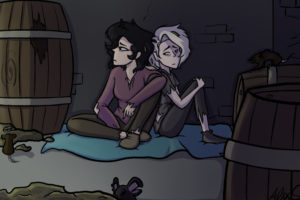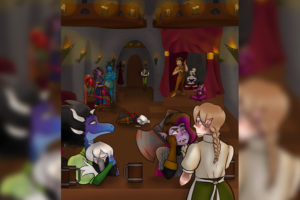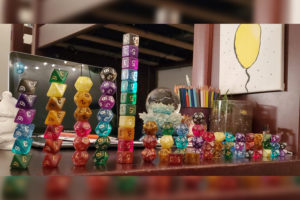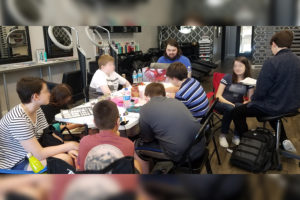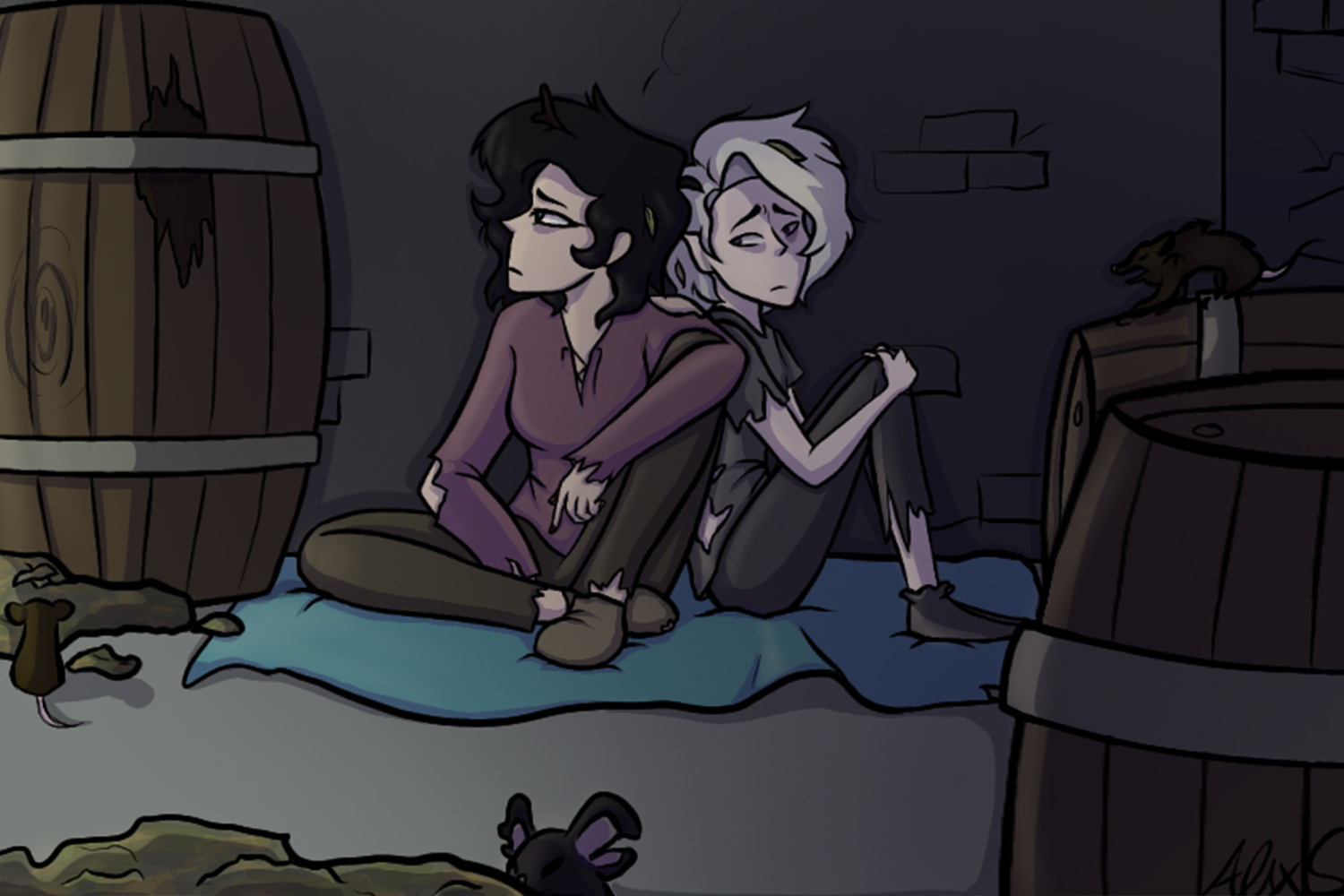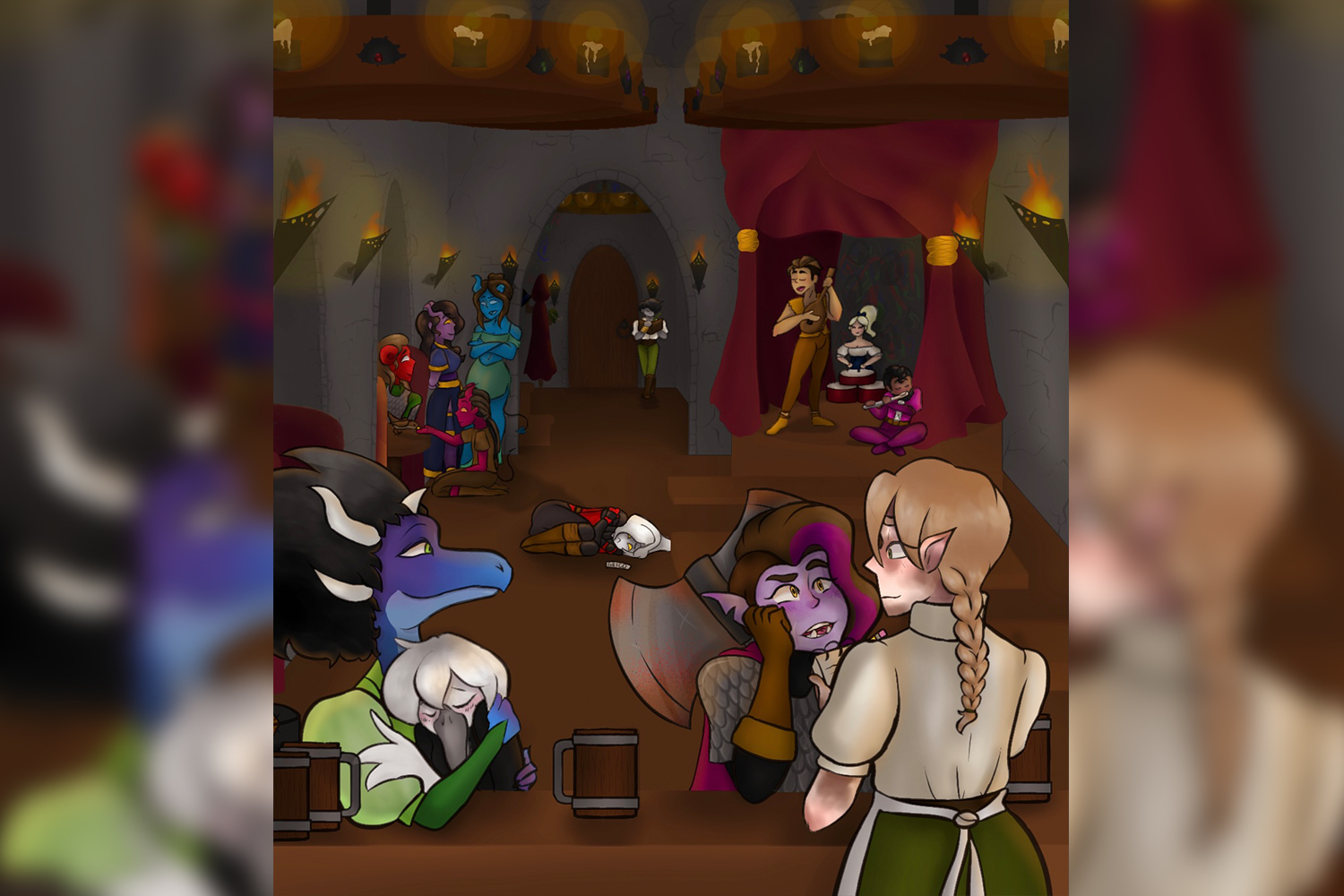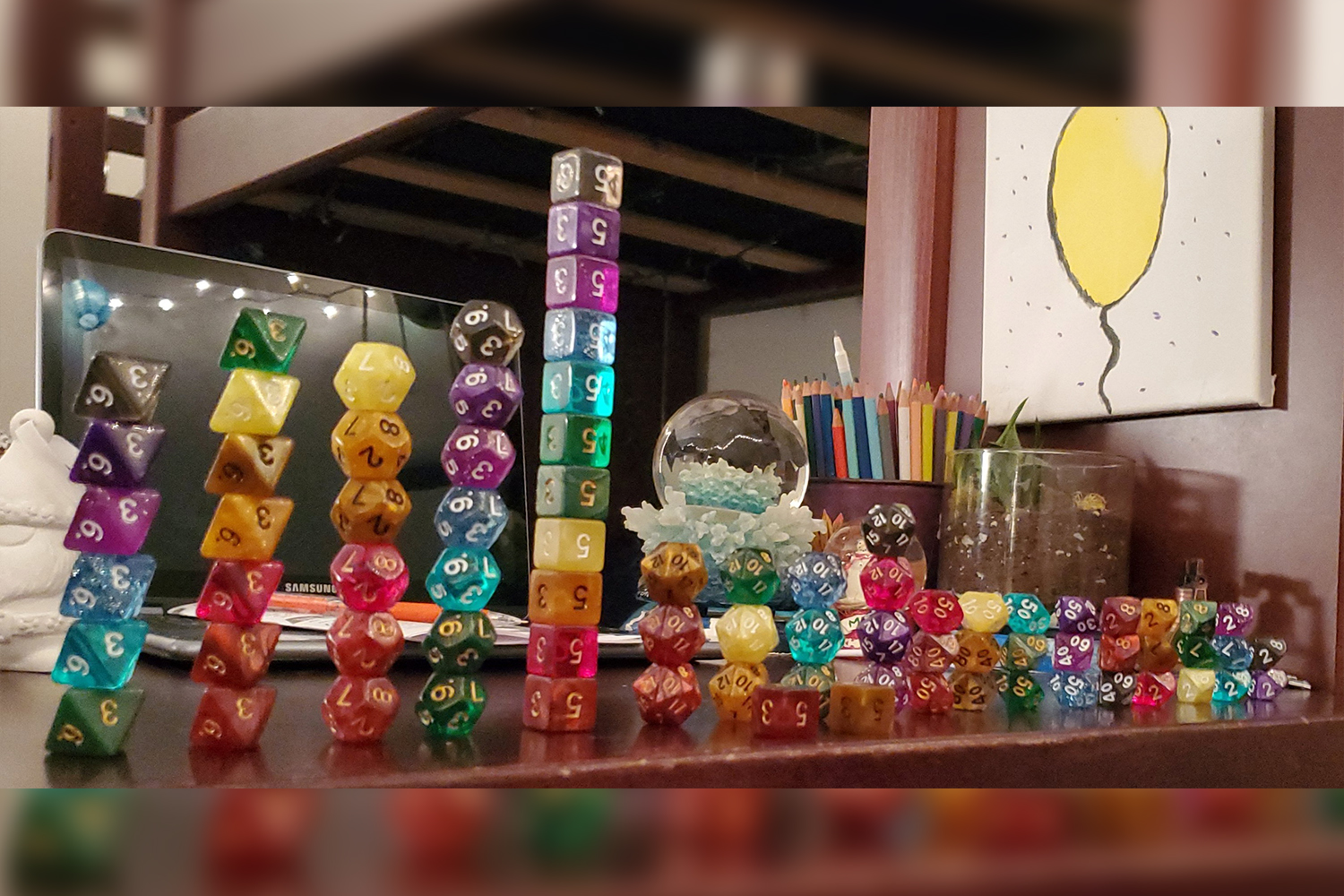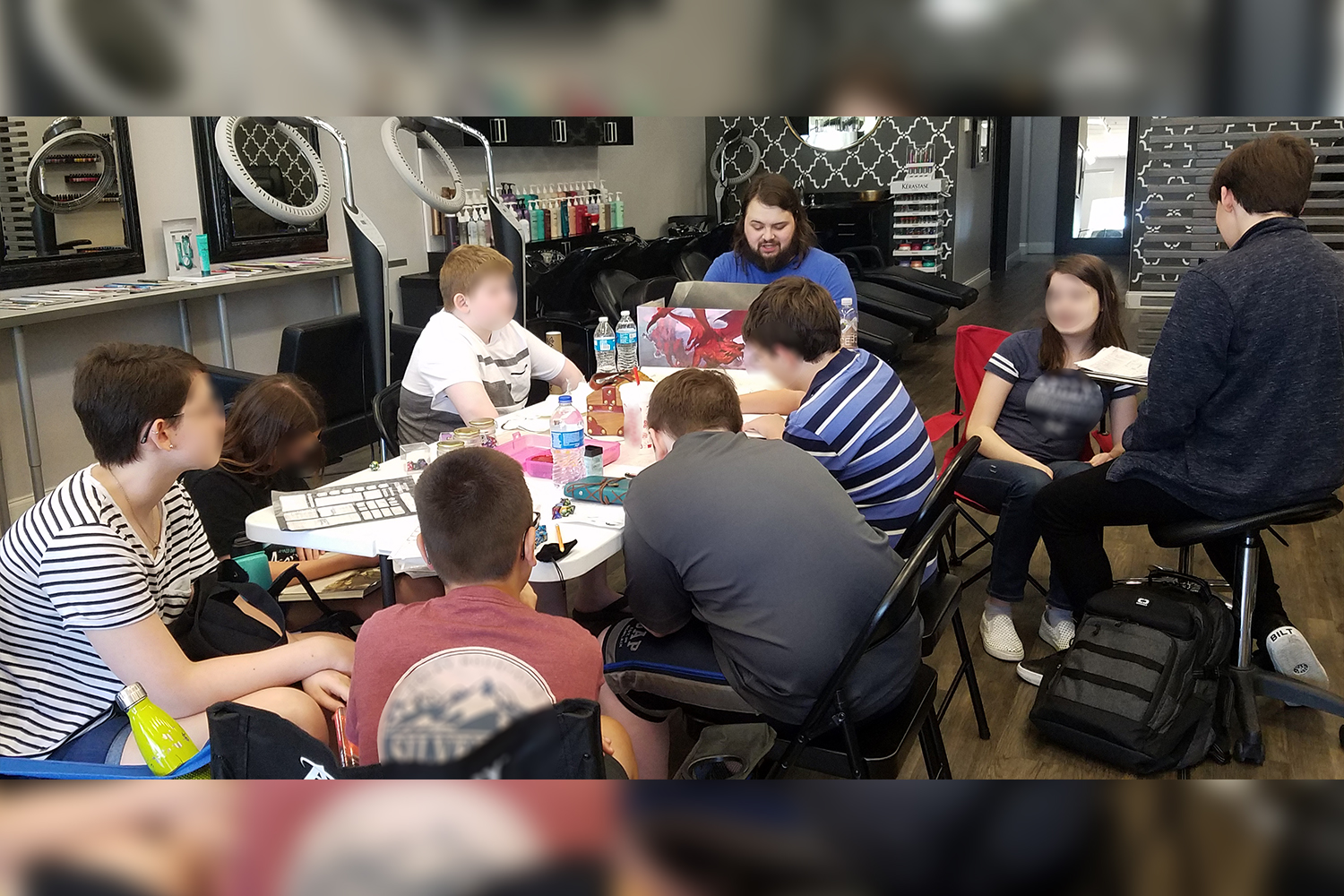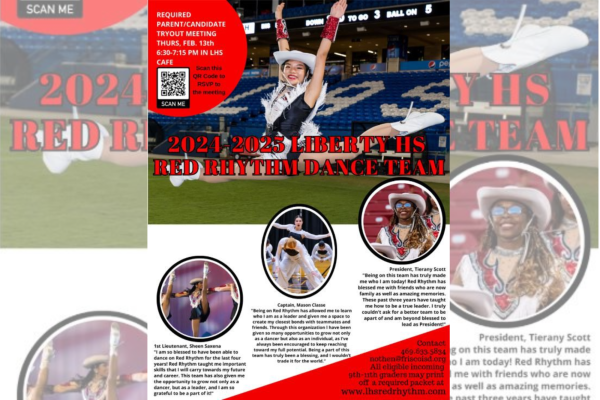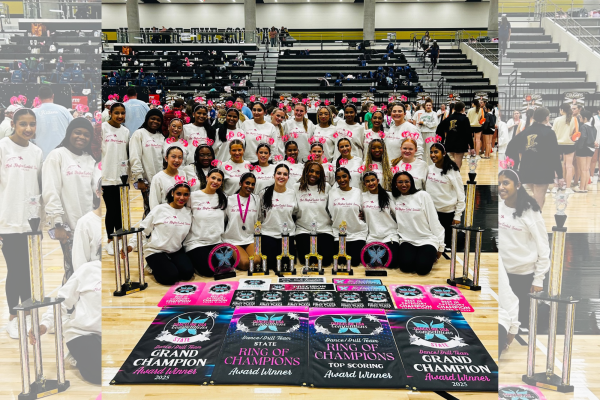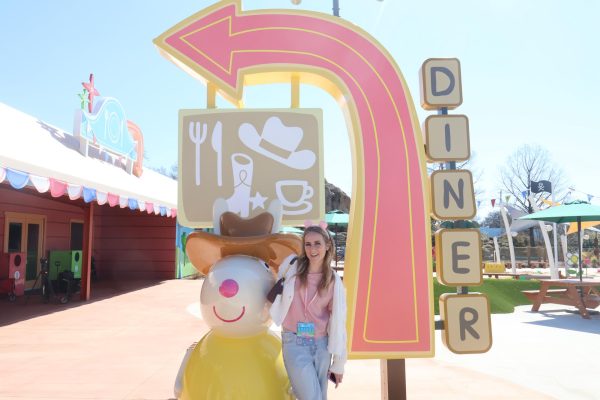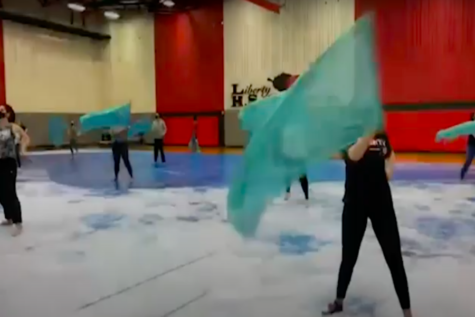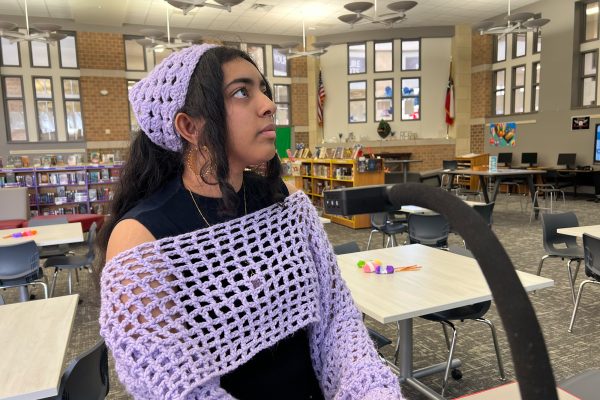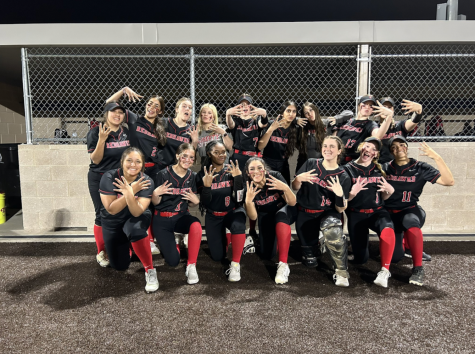Slaying stereotypes, girls embracing D&D
Wizards and witches and warlocks, oh my!
In the fantastical world of Dungeons and Dragons, players can take on the persona of these characters and many more in an epic storytelling game that has been around for decades. Finding its origins in the 1970s, D&D has been a hit among roleplayers and storytellers alike seeking a unique creative outlet.
“D&D is a cooperative game with a story custom made by a Dungeon Master (DM) for a campaign where you create your own character in a sandbox world where you can make choices and sacrifices to reach an ultimate goal,” senior Drew Adrian Julao said. “Players are put in daunting situations and they have to decide what they would like to do based on their character’s stats and roll dice to see if they succeed.”
A complex, ever-growing game with multiple rulebooks and homemade lore surrounding it, D&D can be intimidating to some and fascinating to others. Regardless, players of all sorts have consistently flocked to it as a source of escapism and creative expression.
“It’s fun. I get to hang out with friends, and escape from problems of life,” sophomore Thalia Walker said. “Plus I get to be a bird person, which is pretty cool,”
For those interested in joining a game, there are a few opportunities on campus to get started. There is a tabletop club run on campus that can help new players make friends and form their own D&D games.
“I got involved last year- one of my friends asked me if I wanted to be in her campaign, and I had already wanted to try playing for a while, so I said yes,” current Dungeon Master, sophomore Keith Kibler said. “After that, we just kept playing, and now I usually DM my own games for friends.”
However, D&D has not always been so welcoming.
In its early beginnings, the vast majority of players were males. It has a history of being a very misogynistic scene, females being largely excluded from partaking in the game. Only recently has there been an increase in female players, but even now some of the misogyny still lingers.
“Especially when playing in public groups, you can run into a lot of overbearing people that can cross over boundaries that you usually wouldn’t with a stranger,” senior Lexie Laviolette said. “Whether it’s because they have a character to hide behind or because going on imaginary adventures with you makes them feel like they know you better than they do, they feel entitled to make inappropriate comments. I have had other players comment on my and other people’s bodies, present inappropriate situations for our characters to be in without checking if it’s okay with people first, and continue with those inappropriate situations even after being told to stop. Even though I try my hardest to set and maintain my boundaries, they are constantly pushed in certain groups. Not to mention the pressure put on girls in mostly male spaces to be cool and low maintenance. I’ve been characterized as uptight and a wet blanket for not wanting incredibly inappropriate things to happen in games. On multiple occasions people try to see how far I will bend on my boundaries and then act as though I am being absurd when I get upset with them for crossing that line. And people, especially men, in these groups are much more likely to side with the other person.”
Despite this, females continue to play. More so now than in the past, minority groups of all kinds have been involved in Dungeons and Dragons lately.
“In my current campaign, the party consists of four girls and one boy,” Kibler said. “I’m a boy, so in total the ratio of girls to boys is 4:2, or 2:1.”
In this case, females outnumber males in the party, and this is not an uncommon statistic nowadays. A female uprising is not the only one that has occurred recently, however. LGBT youth have also taken a liking to the game.
“It’s simple. We can create worlds and societies of our own that don’t question the existence of queer characters,” Adrian Julao said. “We create our own representation. The representation of our dreams. Queerness is not only accepted, but it is expected that we have queer characters in the campaign because it is so normalized now. We can be any character we’d like and have power regardless of gender or orientation. Also, the diversity of races and such in D&D is amazing and gives a off sense of acceptance in the D&D universe where you can be who you want to be without consequences or judgement.”
Dungeons and Dragons can be a unique, and inclusive form of creative expression for those who enjoy collaborative storytelling and it has become a much more diverse environment in years past.
“This increase is probably just due to times changing for the better, and gender stereotypes becoming more and more antiquated with every passing day,” Kibler said. “Now you can do whatever makes you happy regardless of it being ‘manly’ or ‘lady-like’, and I think that’s a beautiful thing.”
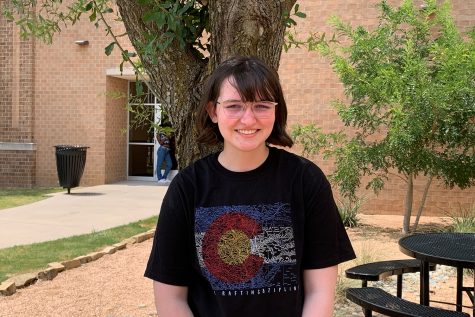
Grace Myers is a sophomore excited to be in her first year with Wingspan. Writing has always been a hobby of hers, along with reading, baking, and spending...




